A rich decoration of the park, Square or the estate of a private house can be Thuja Brabant. Evergreen plant looks equally impressive at all times of the year. And its natural cone-shaped form allows you to create a variety of geometric shapes.
Single Tue can be given a form of a fluffy ball or a neat cone, or pyramid. Lined in a row Thuja Brabant replaces the hedge. Especially attractive such a fence looks like it is cut under a rectangle.
Thuja Western Brabant
Variety Brabant is a popular, fastest growing type of Tui Western. Decorative plant Tuya Brabant, description and main characteristics:
- Origin - North America.
- Climatic conditions are a moderate climate, frost to - 35 ° C.
- Environmental conditions - promotes air purification in the city.
- Height growth rate is 30-80 cm / year.
- The average height is 20 m.
- Growth rate in width and 10 cm / year.
- The average diameter of the crown at the base is 3.5 m.
- Needle-light-salad color, evergreen, scaly structure.
- Cones - up to 1 cm, brown, egg shape.
- The flowering period is the middle-end of spring.
- Methods of reproduction - seeds, by shifting.
The varieties of Western Tui Smaragd and Brabant have similar characteristics. Their popularity is due to the favorable climatic conditions and good growth rate. The embodiment of landscape design ideas can be based on the use of a combination of these varieties.
Thua Brabant. Landing
Thuja Brabant is a fairly unpretentious tree. It has its own preferences to the soil, sunlight, temperature regime and moisture. When neglecting the basic rules for growing plants, its decorative function can be lost.
Selection of terrain and soil
Thuja is a light-insulated plant that does not tolerate the shadow. It is impossible to allow the plant around the clock to be hidden from the rays of the sun, because it can lose the brightness of the green color, as well as the ability to clean the air.
But, the constant heat is no less harmful to the tree than the shaders. The most optimal option is halftime. Location from Eastern or Western side from building.
Croon at the base of the Tui is wide enough, but it has the property to narrow to the top. To grow a hedge, you need to boil seedlings at a distance of more than half a meter from each other. Therefore, the place for landing should be spacious.
If the Thuja Smaragd or Brabant is designed to make a beautiful geometry, the landing site should be close to the perfect plane. Balls, rectangular lines, pyramids and cones - all this has the right form. If they are planted on the surface curve - this will break the composition. Make it absurd and not laconic. However, for non-standard single figures from the tree will quite fit any relief.
Suglink - native and most favorable soil for Tui Brabant. However, the tree is capable of growing on any basis. There is no difference for the growth rate, as far as the Earth fell, from which it consists and to what extent can be fruitless. But for the quality of the decorative function, the difference is significant.
Exhausted, dry land will not give a lush bright plant, full of life. In order for the thuja to grow properly, it must be fertilized when disembarking and several times a year.
Methods of breeding Tui Brabant
For the landing of the Tui, you can use a growing plant, the price of which to many not afford. Buying seedlings or seeds is a more economical option. The most popular and, almost free method of reproduction - shifting.
Seeds in landscape design are not used, because the thua can grow not as needed. Full seedlings are formed about 5 years. Therefore, this method is little in demand.
In winter, seeds are buried in the snow. There they are saturated with moisture and harnessed. In the spring, there is a slight recess (up to 0.5 cm) and seeds seed into it. Pop from above the earth and mulch (dry leaves, sawdust, fallen a cheese).
Before the shoots appear, the land is cultured and watered with a solution of manure and water in a ratio of 1:20. Watering does not stop after the appearance of sprouts, since the fertilizer is required at this stage. The first shoots need to be protected from the rays of the sun.
Shining - reproduction of shoots, branches. From the plant with age not under 2 years old, take off the most "adults" shoots about 40 cm with a tree particle at the base.
For a few minutes, the twigs are placed in a solution of heteroacexin or manganese potassium. This is the disinfection of the plant. After that, the cuttings are sent to germinate in a greenhouse on special soil. The composition of the mixture for the extension of cuttings: peat, earth and river sand in equal proportions. The size of the recesses is up to 3 cm.
Cut in the summer cuttings germinate by autumn, are strengthened at the first frost and ready for landing in the spring. In the summer and autumn they can be left to be ventilated in the warmth of the day. In winter, the seedlings need to be protected from the cold, sprinkling mulch and shelting the film.
The landing of seedlings is carried out at any distance at least 50 cm. To plant single trees dig a hole for hedge - a trench. Parameters of recess must be a little more root sizes.
The optimal period for landing in open ground is the beginning of autumn or mid-spring. At these times, a natural saturation of the plant moisture occurs. In the summer, abundant watering from 10 to 20 liters of water is 1 time per week.
Thua Brabant. Care
The main rules for the care of the Thury - watering in the summer and protection against frosts in winter. Fertilizer, haircut spraying from parasites - these are additional procedures without which you can do.
Fertilizer and watering
The first feeding fertilizer occurs when landed seedlings. Equal quantities are mixed potassium, phosphoric and nitrogen fertilizers. Such a mix will fit the rhizome and strengthen it, giving a good start to the growth of the tree.
In the first year after landing ferture the ground up to 3 times a year after a period of 4 months. Do it in order to stimulate growth, when the root is not firmly fixed in the soil, and the tree itself grows slowly.
The first 12 months is the deadline for adaptation. The fact that the plant has not added to the volume is the usual phenomenon for this period. If you can wait, you do not need to stimulate the growth in obligatory.
Fertilizers should be used according to the instructions (dilute with water and comply with the proportions). Otherwise, the abundance of chemicals can harm the plant - burn the root and lead to the death of Tui Brabant, like on this photo.
The plant is constantly required by moisture, so before boarding the trench or pit is poured with water, they are waiting for the earth to be impregnated with liquid, and after - a tree is planted. Those watered 2 times a month in the summer.
All year round, the soil sprinkle with mulch high enough. It helps to keep moisture in the summer and keep the root from frosts in winter.
Haircut Tui Brabant
The tree itself is not remarkable in itself. He should give any form, especially since the plant is loyal to the haircut. The frequency of the procedure is 2 times a year: early spring and early autumn.
Traditionally, the haircut is carried out by a secateur or garden scissors. This is a long process that takes a lot of effort. For processing a large mass of plantations, you can use a special garden machinery, it saves time.
Thuya Brabant is a universal element of landscape design. Single tree can be a product of garden-park art. A number of such trees are the most real fence of the desired height that will protect from urban dust and hobs the yard from foreign eyes.


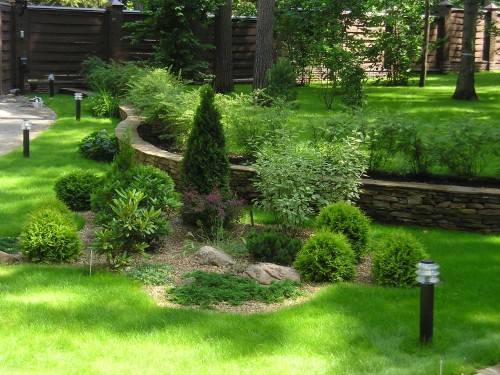
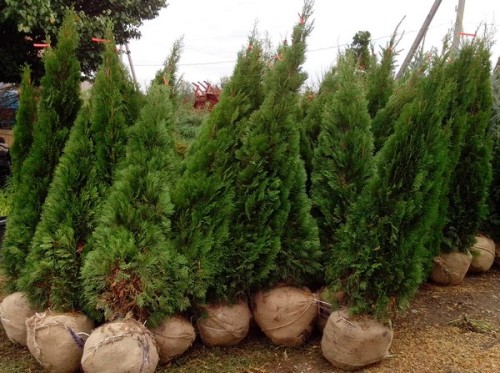
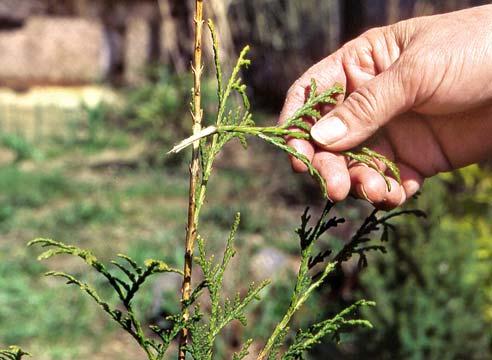


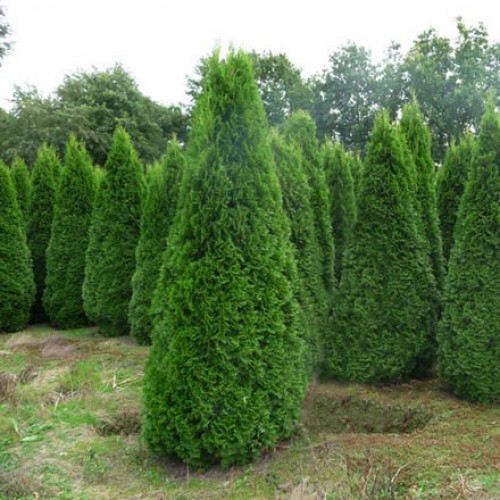
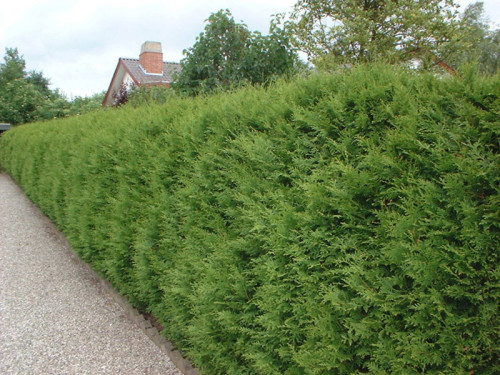

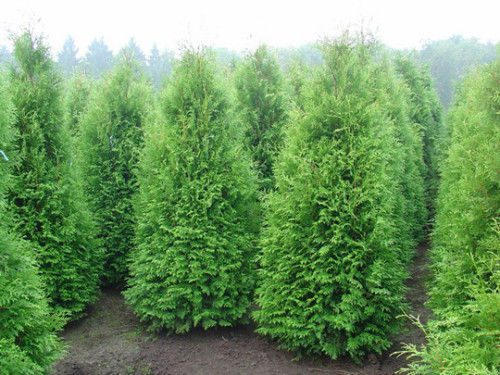












 Start a discussion ...
Start a discussion ...